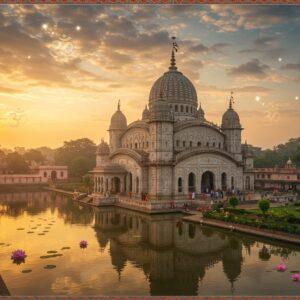
Sikhism, a vibrant faith, is deeply rooted in spiritual practices, and among these, Ardās stands out as a cornerstone. More than just a ritual, Ardās is a profound and sincere invocation to Waheguru, the Divine. It’s woven into the fabric of daily Sikh life, marking both ordinary days and significant milestones. This prayer resonates deeply with many Indians, serving as a link to their cultural heritage and a pathway to spiritual tranquility. Let’s delve into the different aspects of this beautiful tradition.
Exploring the Depths of Ardās: A Multifaceted Prayer
Ardās, a powerful Sikh prayer, encompasses a multitude of purposes. It’s a way of expressing heartfelt gratitude, seeking divine blessings, and approaching Waheguru with humility. Rooted in the time of the Sikh Gurus, Ardās has evolved into a universal prayer for Sikhs globally. Beginning with an invocation of the Gurus’ grace, it culminates in a plea for the well-being of all humanity (“Sarbat da bhala”). Its very structure reflects its multifaceted nature and crucial role within Sikhism. You can find authentic prayer items and Pooja Samagri at Poojn.in to enhance your prayer experience.
Antim Ardās: The Final Prayer, A Soul’s Journey Home
Antim Ardās holds a special place as the prayer offered when a Sikh’s earthly journey concludes. It’s a loving farewell, a hopeful prayer for the soul’s reunion with the Divine. Recited during funeral services, Antim Ardās underscores the communal aspect of this poignant ritual. This prayer beautifully embodies the Sikh belief in the cyclical nature of life and the soul’s immortality, offering comfort and solace to grieving families. You can find a wide selection of spiritual products at Poojn.in that support these important traditions.
Ardās and Langar: Nourishing the Body and Soul
Ardās and Langar, the community kitchen, are deeply intertwined. Before the Langar is served, Ardās is recited, emphasizing gratitude and humility. Langar, a tradition initiated by Guru Nanak, embodies the values of equality and selfless service, principles echoed in Ardās. This connection fosters a powerful sense of unity and community among those sharing the meal, transcending social and economic divides. Enhance your Langar experience with traditional clay items from Poojn.in.
Ardās for Life’s Milestones: Prayers for Every Occasion
The beauty of Ardās lies in its adaptability. It can be customized for various life events – the arrival of a newborn, moving into a new home, or praying for good health. Each occasion calls for specific variations in the Ardās, mirroring individual hopes and needs. These prayers imbue significant milestones with spiritual meaning, strengthening family and community bonds through shared experiences. Celebrate these special moments with auspicious items from Poojn.in.
The Profound Impact of Ardās: Connecting to Faith and Heritage
The regular practice of Ardās offers Sikhs a way to connect deeply with their faith and heritage. It provides comfort, guidance, and a sense of belonging. Ardās nurtures psychological well-being, fostering peace and resilience. In a rapidly changing world, it plays a vital role in preserving traditions, providing a sense of continuity and connection to one’s roots.
Delving Deeper into Sikh Prayers: Types and Significance
Sikh prayers form a fundamental aspect of the Sikh faith, acting as a bridge to Waheguru (God). These prayers are a means of expressing gratitude, seeking guidance, and strengthening the community’s shared beliefs. Let’s explore some key aspects:
Types of Sikh Prayers:
- Nitnem Banis: These are the five essential daily prayers (Panj Bania) that Sikhs are expected to recite. Drawn from the Guru Granth Sahib and the compositions of Guru Gobind Singh, they nourish the soul. Morning prayers include Japji Sahib, Jaap Sahib, and Tav-Prasad Savaiye. Baptized Sikhs (Amritdharis) also recite Chaupai Sahib and Anand Sahib.
- Naam Simran: This practice involves contemplating the Divine Name (Waheguru) through repetition (Nām Japō) or remembrance (Simran). A cornerstone of Bhakti, it fosters deep connection with the divine. This helps in centering oneself and focusing on the divine presence.
- Paath: This refers to the devotional reading of the Guru Granth Sahib or other daily prayers, allowing for reflection and understanding. It’s a way to immerse oneself in the wisdom of the scriptures. This helps connect with the teachings and messages of the Gurus.
- Ardas: A formal prayer offered at the end of services and ceremonies, it’s a collective supplication for divine guidance and support. It brings the community together in shared intention. This strengthens the bond between individuals and the Guru.
Understanding Ardās in Detail:
- Meaning: The word “Ardās” simply means “prayer,” but its significance goes far beyond a simple definition. It embodies a deep conversation with the Divine.
- Purpose: Ardās serves as a heartfelt dialogue with Waheguru, a request for blessings, and an expression of gratitude. It allows for personal intentions and supplications.
- Structure: Ardās incorporates historical references to the Sikh Gurus and martyrs, prayers for the well-being of all humanity, and personal intentions. It’s a tapestry of history, hope, and individual connection to the divine.
- Recitation: While often recited in Gurdwaras, Ardās can be offered anywhere, at the end of morning and evening prayers, during special occasions, and before important tasks. Its flexibility makes it accessible at all times.
- Core: At the heart of Ardās lies an invocation recited by Guru Gobind Singh, calling upon the power of Adi Shakti. This invocation connects the prayer to a powerful source of divine energy.
The Significance of Sikh Prayers:
- Connection with the Divine: Prayers are a pathway to connect with Waheguru and seek spiritual direction, fostering a deep sense of belonging. This connection brings peace and strengthens faith.
- Remembrance of God: Sikhs strive to keep Waheguru’s name ever-present, making worship an integral part of daily life. This constant remembrance deepens the spiritual connection.
- Community: Collective prayers, particularly Ardās, nurture unity and togetherness within the Sikh community. Sharing these prayers strengthens the bonds between individuals.
- Moral and Spiritual Growth: Prayers and hymns (Gurbani) illuminate the soul’s journey and inspire Sikhs to live by the teachings of the Guru Granth Sahib, promoting ethical and spiritual development.
Other Important Aspects of Sikh Prayers:
- Gurbani: The hymns of the Gurus, enshrined in the Guru Granth Sahib, are written in poetic verse and rhyme, meant to be recited in thirty-one ragas of classical Indian music. These hymns are a source of deep spiritual wisdom.
- Gurmukhi Script: Gurmukhi, the sacred script used for Sikh prayers, is an essential element of the tradition. Sikhs are encouraged to learn Gurmukhi to fully engage with the daily prayers. This connects them to the language of the scriptures.
At Poojn.in, we understand the deep significance of these practices. Explore our range of branded and Cycle spiritual products, designed to support your spiritual journey. We offer Dashakarma items, Rudraksha malas, incense sticks, and much more. Connect with us at 03369029784 or WhatsApp us at 9476142738 for personalized assistance. Visit www.poojn.in to explore our collection.


